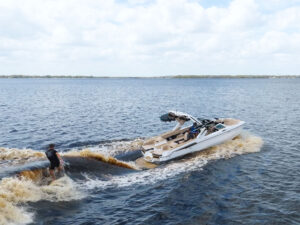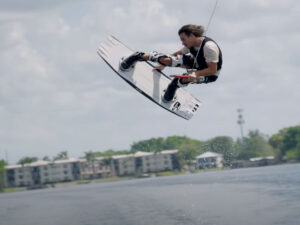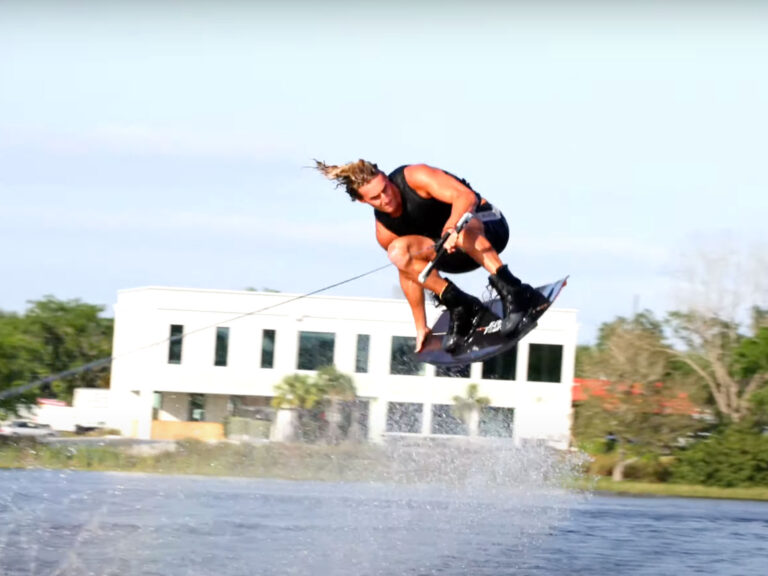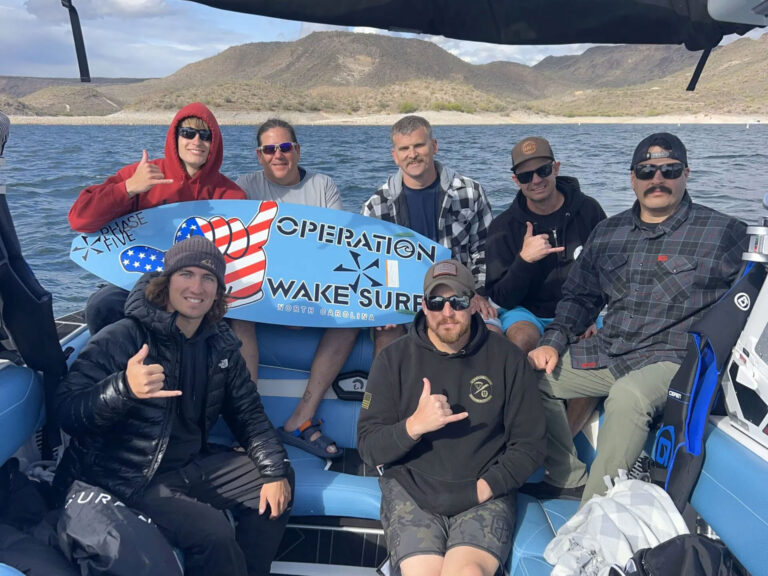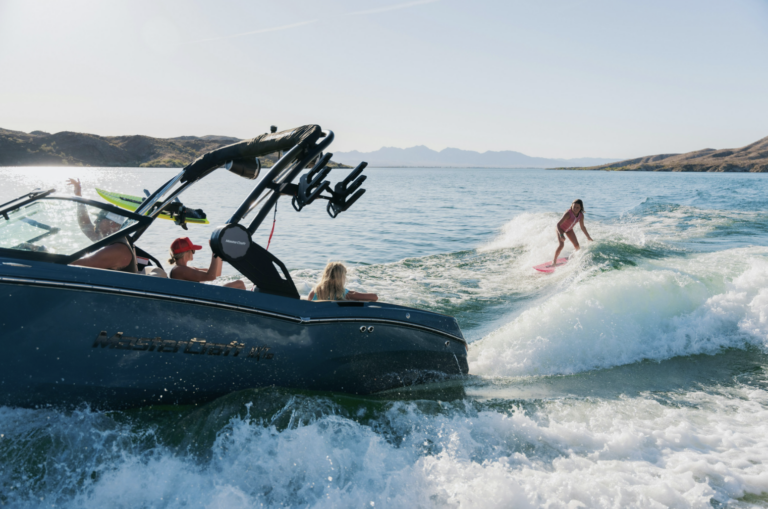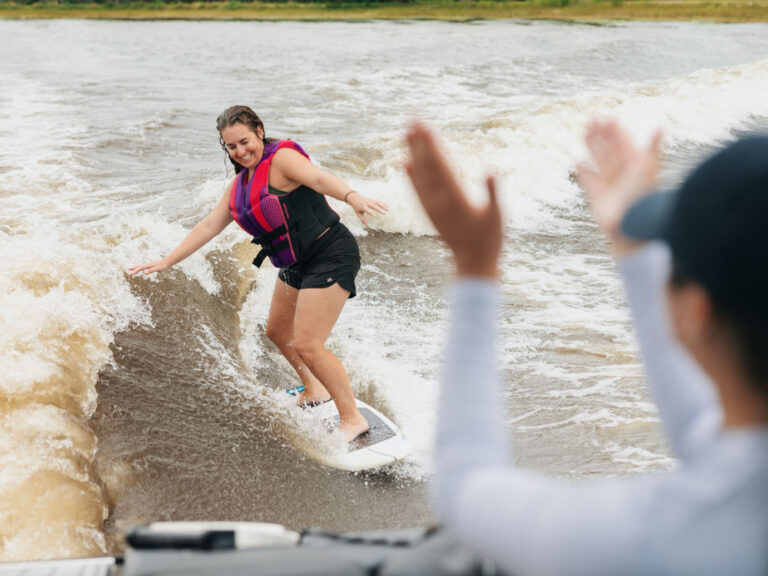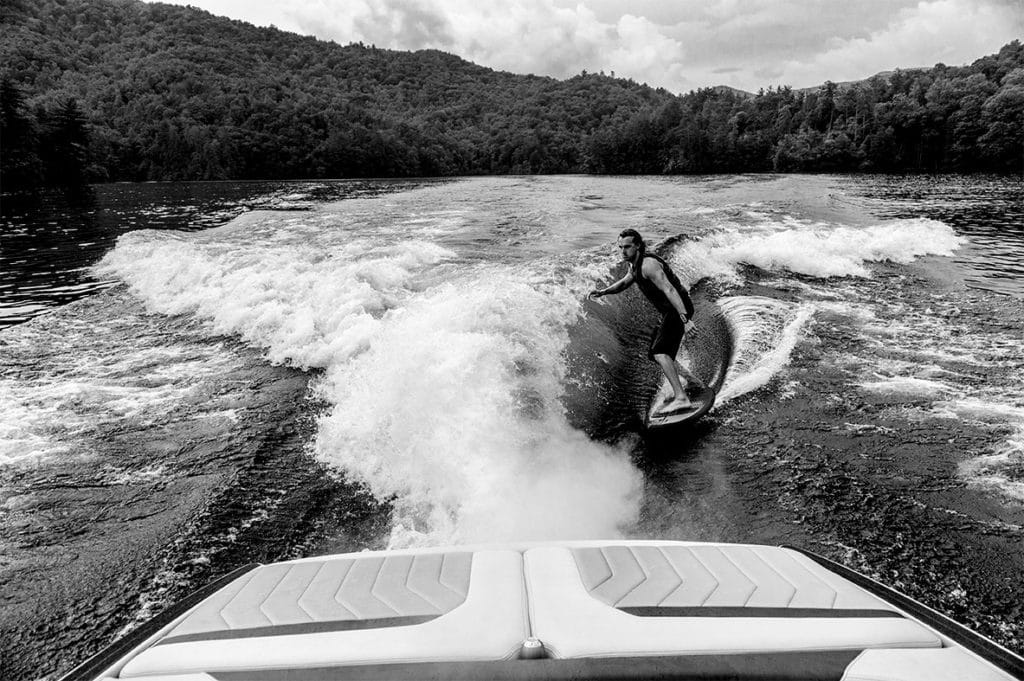
— Danny Gasper, VP of Product Development at Malibu Boats WAKEBOARDING
Push a button; make a great surf wave. That was the not-as-simple-as-it-sounds task facing Danny Gasper on Merced, California’s Lake Yosemite in the fall of 2011. Malibu’s vice president for product development was desperately searching for a way to pull boating’s wave-making process out of its current listed-to-one-side, cram-everyone-into-the corner predicament.
The fin system on which Gasper had been toiling was producing mediocre results. In testing the system, however, he noticed a 15-inch-tall wall of water emanating from the hull. He quickly fashioned an apparatus that would redirect that wall of water so it continued traveling aft. The idea for Surf Gate was born.
After two weeks of furious on-water testing, Gasper had a prototype that produced a perfect wave at the push of a button. Malibu debuted Surf Gate in the summer of 2012, and it’s safe to say wakesurfing has never been quite the same since.
If you run a boat at surf speeds without Surf Gate, you have a wall of water on both sides. When that water releases from the transom, the two walls crash together in the middle, creating a big mound of white water. If you stop that collision from occurring, you’ll naturally make a surf wave. It sure sounds simple, but no one before Gasper had realized it.
When deployed, Surf Gate diffuses the water that would normally form the wall of water. The 6-inch gate doesn’t deflect all of the water — some goes over the top and some flows underneath — but it diffuses the force.
Surf Gate must be deployed and retracted with remarkable precision, or the resulting waves will be less than ideal. “They extend 6 inches from the hull side,” Gasper says. “If you extended them 4 inches, you’d have a wave, but it wouldn’t be good. And the angle of retraction is just as important as how far they’re extended.”
The new Gasper-designed Power Wedge II is a key complement to Surf Gate and Malibu’s hard-tank and plug-and-play ballast systems. Now with 21 percent more surface area, the hydraulic hardware yields down force that Malibu equates to 300 additional pounds of ballast, creating a total of 1,500 pounds of displacement. Deploying Power Wedge II at an upward angle creates lift, making it easier to get fully weighted boats up on plane.
Q&A WITH DANNY GASPER
VP of Product Design, Malibu Boats
Q: Virtually everyone who buys a Malibu boat these days opts for Surf Gate. Do you think it’s becoming as indispensable as features like towers and ballast?
A: You have to have it. I can’t imagine anyone buying a boat that doesn’t have Surf Gate on it. Apparently there must be a few [who don’t opt for it], but it’s not more than a percent or two.
Q: You’ve worked at Malibu for almost 30 years. Is Surf Gate your greatest innovation at the company?
A: Surf Gate is at the top of the list. I invented Power Wedge too. Both were pretty revolutionary, but Surf Gate has been more of a game changer.
Q: What’s the next evolution of Surf Gate? Or does it even need to evolve?
A: We’re always thinking about what’s next. In terms of creating an optimized surf wake, it’s already dialed in — I was never going to settle for a mediocre wave. But there might be other ways to improve it beyond how good the surf wave is.
